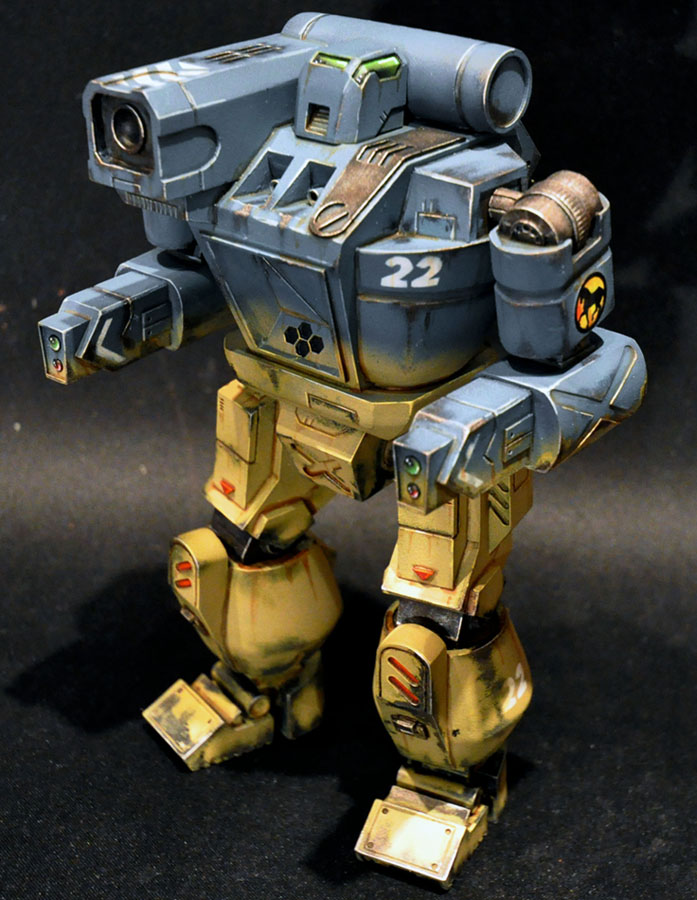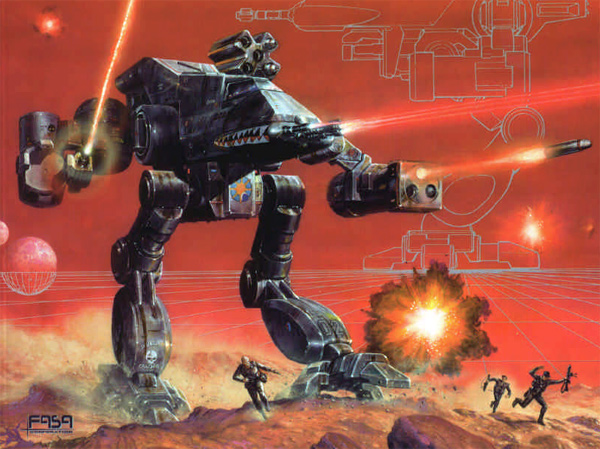No, it doesn't.
The
Square-Cube Law ("SCL") you're
trying to invoke (
again)
absolutely does not necessarily mean that "a linear increase in weight should result in a cubed increase in height".
The SCL indicates that "
when an object undergoes a proportional increase in size, its new volume is proportional to the cube of the multiplier and its new surface area is proportional to the square of the multiplier".
In other words, the SCL states that
a linear increase (or decrease) in overall size results in a cubic increase (or decrease) in total volume and a square increase (or decrease) in total surface area.
- That is, if you take a 'Mech model and make it "twice as big" (that is, multiply all dimensions by two), the new (scaled-up) model will have four times the total surface area (because 2^2 = 4) and eight times the total volume (because 2^3 = 8).
- Alternatively, if you take a 'Mech model and make it "one-and-a-half times as big" (that is, multiply all dimensions by 1.5), the new (scaled-up) model will have 2.25 times the total surface area (because 1.5^2 = 2.25) and 3.375 times the total volume (because 1.5^3 = 3.375).
To provide a practical example:
- The cube-root of 2 (that is, 2^(1/3)) is 1.2599 (round to 1.26), and the cube-root of 4 (that is, 4^(1/3)) is 1.5874 (round to 1.59). The reciprocal of 1.26 (that is, 1/1.26) is 0.79 and the reciprocal of 1.59 (that is, 1/1.59) is 0.63.
- We will assume, for the sake of the example, that all 'Mechs would be scaled to the MWO Atlas (height of 17.6 meters) and that all 'Mechs will have the same, or nearly the same, average density (that is, total mass divided by total volume will be the same, or close to it). Thus, volume and mass become proportionally-related (that is, a doubling of volume when density is constant results in a doubling of mass, and vice versa; a halving of mass when density is constant results in a halving of volume, and vice versa).
Under these conditions, an
Atlas rescaled to the same mass as a
Centurion (that is, one-half of the
Atlas' original mass) would be 79% of the physical size of the original
Atlas (e.g. 79% height, 79% width, 79% depth, 79% limb diameter/thickness, etc.), which would make it 13.9691 meters tall (round to 13.97 meters).
The current height of the MWO
Centurion is 14.7 meters (or 48.228 feet), a difference of 0.7309 meters (or 2.398 feet) "too tall".
Likewise, an
Atlas rescaled to the same mass as a
Commando (that is, one-quarter of the
Atlas' original mass) would be 63% of the physical size of the original
Atlas (e.g. 63% height, 63% width, 63% depth, 63% limb diameter/thickness, etc.), which would make it 11.0873 meters tall (round to 11.09 meters).
The current height of the MWO
Commando is 9.7 meters (or 31.824 feet), a difference of 1.3873 meters (or 4.552 feet) "too short".
Aditionally, bear in mind that neither the
Commando nor the
Centurion are proportionally identical to the
Atlas; both of the former have far-thinner (and thus less voluminous) limbs than would be suggested by the preceeding calculations, with the displaced volume needing to be either transferred to the body (making the 'Mech broader or deeper... or taller) or remaining in the limbs by changing their length (where lengthening the legs will, of course, also make the 'Mech taller) in order to maintain the constant density relationship.
As such, it is in fact quite logical and sensible that a
Hunchback, being much more stoutly-built than the relatively-lean
Centurion and
Trebuchet, is also significantly shorter than either of them, despite all of them being the same mass (and assuming that all of them should have similar average density).
In summary: depending on one's reference points and which scaling algorithms are used, (at least some of) the Lights are generally too small & the sizes of (at least some of) the Mediums are fairly close to where they "should" be, and the scaling of a number of the 'Mechs in general, while not perfect, is not so drastically off as some might believe.
 Roland, on 11 October 2013 - 06:12 AM, said:
Roland, on 11 October 2013 - 06:12 AM, said:






























